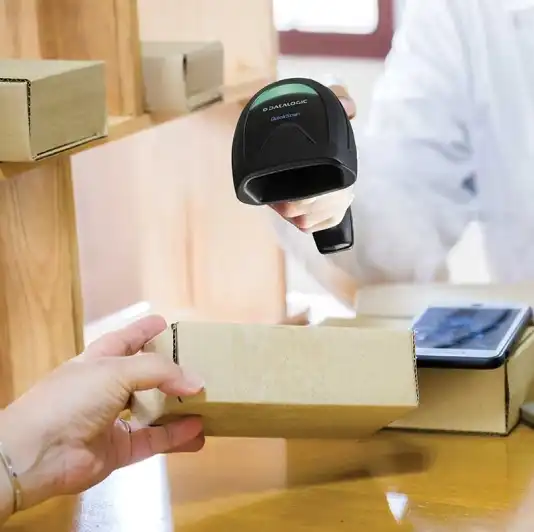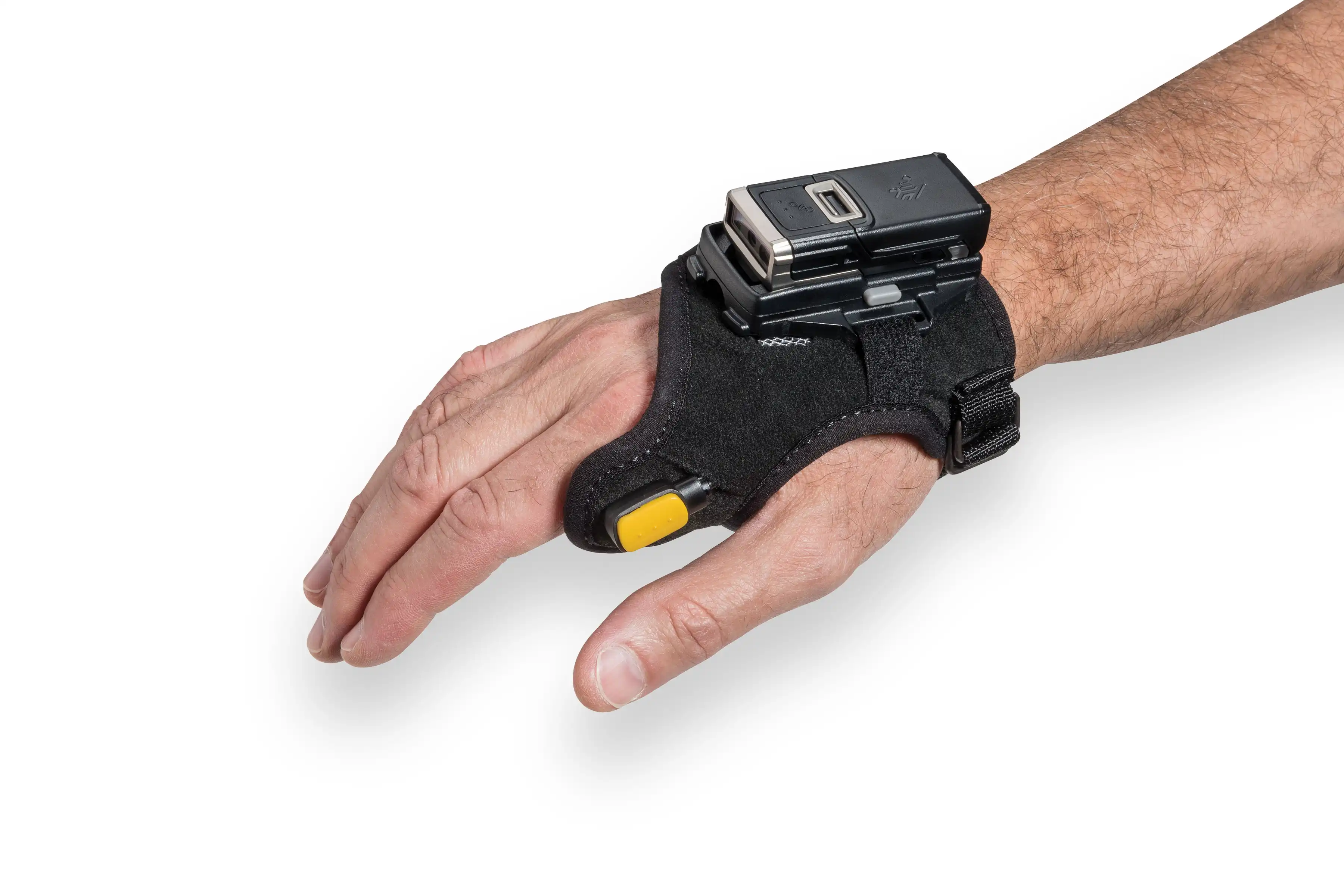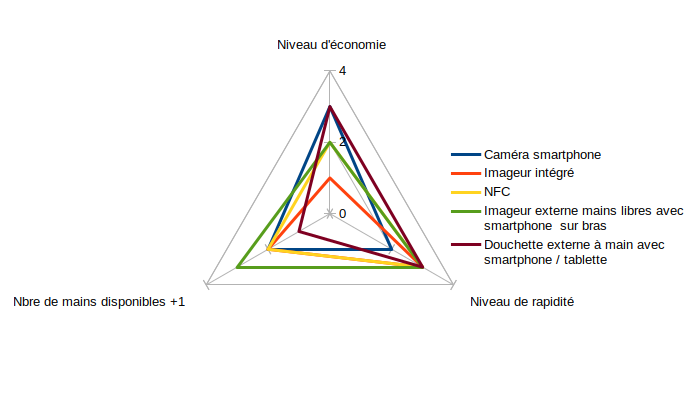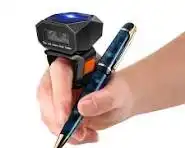How can we make economical use of the means of capturing data for hands-free ?
Using our precise knowledge of what our software can do to replace certain hardware functions, and its compatibility with older versions of Android, let’s delve into your hardware reserves to build an economical and functional data capture solution!
Here’s a list of input devices whose assembly we’ll be looking at, and the trade-offs between economy, ease of use and speed:
- the keyboard (on the screen): we’ll leave this method aside, as it’s universal and very slow,
- choice of identifiers with filter in a drop-down list,
- the camera: software analysis of the image and extraction of 2 types of data: characters by OCR or barcodes by barcode image detection,
- the imager integrated on professional machines, which ultimately produces exactly the same result via hardware, but under constant lighting conditions,
- an external imager or scanner (1D) via Bluetooth, there’s the “douchette” that takes one hand or the “bague” that leaves the hands free,
- data contained in another memory, via Rfid-type waves and, more specifically, via the NFC sensor integrated into virtually all devices except tablets,
- data on the net, such as IoTs via Wifi or 4G, but the latter asynchronous means is not included in the comparison.
Our custom developments and standard apps can capture this data as it arrives on an Android device, sending it to the right place in the application to maintain consistency and speed of capture whatever the means of acquisition.
Let’s take a look at the possible assemblies, and then classify them.
Possible combinations of input devices :
The current smartphone generally has a camera and NFC reading on the back, so for these two means, there’s no need for physical assembly; barcode scanning and OCR are included in our applications as standard. NFC capture is rarer, and needs to be added on a case-by-case basis.
Most tablets have a camera on the back, which can be used to read barcodes.
With our version compatibility, users can recover old Android smartphones or tablets themselves by testing with our app test versions.
The standard means that the user can choose apply to all fields in all application modules. If a combination of means is requested, it will be the subject of a specific development.
Similarly, external hand-held or hands-free readers can read the symbology of the barcode being read, which can be detected and used: so if the app asks for data to be placed according to the symbology, we’re getting into a specific area, unless it’s part of a standard.
If you’re not satisfied on your smartphone with the speed or accuracy of barcode reading by the camera, or with the reading distance, you can add one of the two means with our apps (by checking the “external scanner” box on the app, the handheld setting is required to add a “CR” (input) suffix to the end of the barcode read), specifying the reading distance and the type of codes to be read when purchasing:
a handheld scanner linked wirelessly by Bluetooth (there are some in the company’s cupboards)

Association of a BT barcode handheld with a smartphone or tablet
a hands-free scanner, either on the wrist or fingertip, with the same settings as above, via Bluetooth, plus an armband to place the smartphone on the forearm.

Linking a BT hands-free scanner to a smartphone
Ranking of mobile data capture devices:
The proposed ranking is by order of economy (3 = included as standard in the smartphone, i.e. the lowest price, 1 = the highest price) and by order of speed these means and finally by order of comfort: let’s say by number of hands available +1, from 1 to 3.
We put “2” in savings to NFC because it requires more development.
| Means of acquisition | Economy level | No. of available hands +1 | Speed level |
|---|---|---|---|
| Smartphone camera | 3 | 2 | 2 |
| Integrated imager | 1 | 2 | 3 |
| NFC | 2 | 2 | 3 |
| Hands-free external imager with smartphone on arm | 2 | 3 | 3 |
| external hand scanner with smartphone/tablet | 3 | 1 | 3 |

Positioning of data acquisition resources according to several criteria
Of course, other factors can be added, such as handling complexity, reading distance and equipment versatility, but this depends so much on the products assembled together and available to companies prior to their acquisition.
Particularity of hands-free kits: As they are made of fabric and contain electronics, they are difficult to wash and are in contact with the operator’s skin for a long time, which poses hygiene problems for exchanges or loans.
What’s more, there are left-right variants: a right-handed person will prefer to hold it on the left and vice versa, and 3 size variants to suit different hands.
The hands-free scan ring kit is therefore a highly individualized piece of equipment for each operator, and not very flexible.
Advice to help you make the right choice before investing:
It’s clear that the cost-effective addition of barcode and data reading equipment in general requires a precise analysis of the user’s wishes, constraints and budget, as well as expertise in the development resources and hardware on the market, in order to produce the best solution for rapid data capture.
It is therefore important, before adding resources, to have informed opinions so as not to exhaust the remaining budget and forget, for example, the software.
Service
Innovation
Retail
Field-service
Health
Logistique,transports,SCM, production
Categories :
Industries :
